Planting colorful flowers in your garden is the best way to welcome spring. After all, the season of colors comes after a dark, long snowy period. Whether you reside in the sunny South or snowy North, planting spring flowers can help you rejuvenate your garden. Do you wish to learn about the best flowers to plant in spring?
Planting flowers can be reinvigorating for your winter-weary soul. If you want to plant a perennial, know that they can return for several years. If you want to start with shrubs, choose ones that suit your USDA Zone so they can survive the harsh winters of your town.
You should plant spring-blooming bulbs in fall/autumn before the ground frosts or freezes. While you may find many annuals that can endure frost, some are not tough enough. It is better to plant them after the expected frost period ends in your area.
However, if you’re a lucky gardener living in a warmer climate, spring in your area may arrive early. And, it can be a fantastic time for your garden. Imagine the little bits of vibrant bloomers emerging from the land. Isn’t it exciting?
If you’re already suffering from “spring fever” and all set to bloom your landscape with lively “spring blossoms,”; here is all you need to know about the best flowers to plant in spring in different US states, including, NJ, New York, NY, Texas, Ohio, Pennsylvania, Indiana, Wisconsin, NC, and Georgia.
Best Flowers to Plant in Spring
1. Tulips

Looking for some dramatic show in your garden? Plant tulips!
These vibrant, luscious, and beautiful flowers are the best choice to plant flowers for your spring garden. Although they might not last long, they are pretty to look at when they’re blooming. Tulips are technically perennial but may fade after one year. That is why it’s better to treat them as annuals and plant them every year. For tulips to bloom with full spring colors, you must plant them in the fall.
Moreover, flowers are delectable to living creatures and critters. Planting them in pots will keep them safe from rodents. This way, animals can’t dig underneath the bulbs.
Tulips prefer growing in regions with different seasons, from chilly winters to scorching summers. You must give them enough time underground, so they thrive with brilliant flowers.
If your garden’s soil is not fertile, the chances of tulips growing in your garden are slim. You need a sunny location and ensure proper water supply to let tulip bulbs bloom.
The active bulbs need moisture to become healthy flowering. You need to water tulips at the correct times to maintain growing conditions for a beautiful, long-lasting tulip-filled garden. Tulip is one of the best flowers to plant in spring in New Jersey and New York.
| Best States to Grow Tulip | Zones to Grow Tulip |
|---|---|
| New Jersey | Tulips can perform best in plant hardiness zone 3 through zone 8 |
| New York |
2. Fritillary

If you want to plant something more tropical, colorful, and unique, fritillary is the right choice for you to plant in spring. They are full-planted bulbs with striking bell-shaped blooms, appearing around the same period, daffodil and tulips. You can treat them as annuals as they don’t return.
Interestingly, fritillaries may have several guises, from intriguing to subtle to beguiling to the dramatic. You can grow this 10cm plant in dappled shade and draining soil. They need proper moisture compared to others. Rodents and critters usually are not fond of them
Plant fritillary bulbs in fall and wait till spring to enjoy the bulbs with mighty crown size. They need plenty of fertile soil, drainage, and sunlight. Fritillaries are beautiful and easy-to-grow plants and do well in the lightly shaded spots. Fritillaries are the best flowers to plant in spring in Florida, Texas, Hawai, and California.
| Best States to Grow Fritillaries | Zones to Grow Fritillaries |
|---|---|
| Florida | Fritillaries can perform best in plant hardiness zone 4 through zone 8 |
| Texas | |
| California | |
| Hawaii |
3. Pansies and Violas
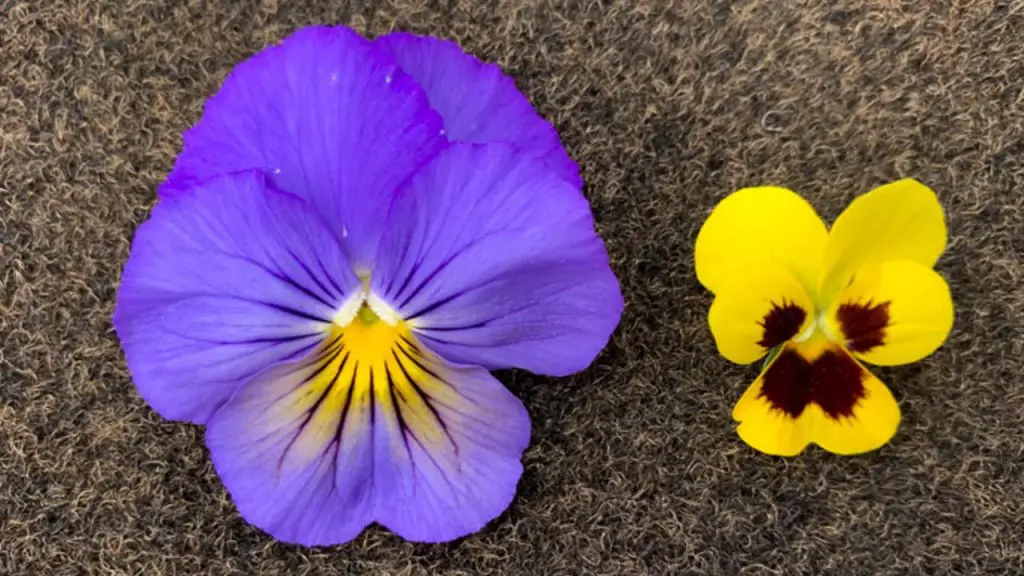
Cheerful and bright, pansies and violas can literally take your garden to the next level. They are adorable annuals and may last until the heat of summer fades them. They can tolerate frost and mild freeze, which means you needn’t hesitate to plant these flowers in early spring.
As an annual plant, it looks exceptionally refreshing as a window box and border plant. The variety of hues and delicate shape of pansies make them the best spring bloomers. It has brightly-colored throats that look like a person.
The member of the viola family is also known as Johnny jump-up. You can see them in many gardens in early spring, mostly in northern areas.
You can plant traditional pansy during the cool fall and spring months. Make sure you provide direct morning sunlight but with a necessary shield from intense rays. Fertile and well-drained soil with high organic matter can fuel abundant blooms.
| Best States to Grow Pansies | Zones to Grow Pansies |
|---|---|
| Georgia | Pansies can perform best in plant hardiness Zone 7 – Zone 8 |
| Florida |
4. Rhododendron

Rhododendrons grow with unique glossy leaves. They are late spring bloomers and may grow in plenty of shades, including purple, peach, white, salmon, and pink. Note that Rhododendrons can be deciduous and evergreen. You must make sure what variety you’re buying.
One reason that makes these bloomers a good choice for your spring garden is that they are late-spring mainstays because of the large bright leaves and spectacular clusters of flowers. If you live in an area with a mild climate, you can plant rhododendrons any time of the year. Fall planting is a good idea for a hot climate to establish a root system during the winter months. Rhododendrons are the best flowers to plant in spring in Michigan, New Jersey, and New York.
| Best States to Grow Rhododendrons | Zones to Grow Rhododendrons |
|---|---|
| Michigan | Rhododendrons can perform best in plant hardiness zone 3 through zone 6 for temperate regions And 7 to 11 for hot regions |
| New York | |
| Indiana | |
| New Jersey |
5. Sweet Alyssum
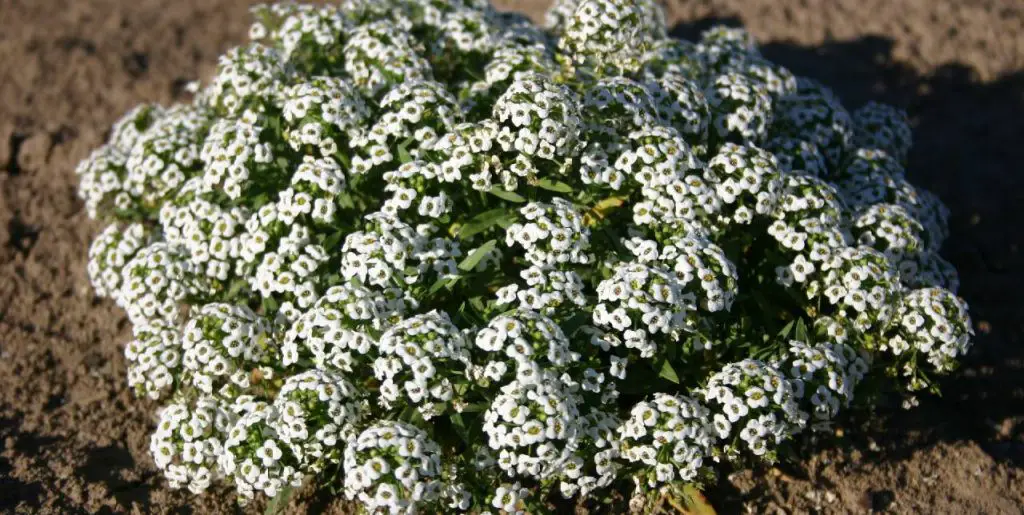
While the dainty annual “sweet alyssum looks delicate, it is pretty tough. If you think it minds frost, you’re mistaken.
As long as it receives sufficient water, it keeps on blooming until the hard frosty season. That is to say, the spring bloomers are a significant investment. The tiny yet colorful flowers can blanket your landscape or garden.
Sweet Alyssum is a European native and has low-growing foliage that quickly grows and covers the ground with cross-shaped, petal flowers. You need only two months to grow sweet alyssum.
Generally, it is a cool-season flower that sets out in spring once frost passes. You can also produce these flowers throughout autumn and winter. Most varieties of sweet alyssum fade in the hot season but bloom in the fall.
| Best States to Grow Sweet Alyssum | Zones to Grow Sweet Alyssum |
|---|---|
| Texas | Sweet Alyssum can perform best in plant hardiness zone 5 through zone 9 |
| California |
6. Snapdragons

Want to take a straight jumpstart on colors in your orchid? Plant snapdragons!
These popular short-lived perennials are usually planted as annuals. The bright bloomers are a mainstay for gardens full of classic flowers. With their infinite uses, they can dwell in your patio container flower boxes and border gardens. Due to the snout dragon shape, people call them snapdragons. These showy tolerant annuals do great in pots, hanging baskets, and planters.
Bright snapdragons bloom throughout cold weather with intensely sharp and saturated colors. They can be a real standout for both fall and spring gardens. However, they need well-draining, rich soil and a good sunny location to grow. Adequate watering is also necessary to keep snapdragons healthy.
| Best States to Grow Snapdragons | Zones to Grow Snapdragons |
|---|---|
| Georgia | Snapdragons can perform best in plant hardiness zone 7 through zone 11 |
| Florida |
7. Irises

The early spring bloomers are lovely bulbs and can add a dramatic look to your garden. There is no denying that Irises are some of the showiest blooming plants. Not only are they easy to care but also you can hybridize them to re-bloom in late summer.
Like pansies, irises also come in beautiful hues. Gardeners usually bear and ruffle for a glorious show in spring. Late summer is the best time you can plant iris. Mid-July, for instance, to October (early full) is the ideal time to grow these bloomers, depending on the region. If you live in areas with a Southern climate, you can push this deadline to November.
Irises need well-drained and balanced soil to grow healthy. However, the spring bloomers are quite adaptable to many soil types. The flowers need six to seven hours of sunlight for superior growth. The best flowers to plant in spring in Ohio and Colorado are Irises.
| Best States to Grow irises | Zones to Grow irises |
|---|---|
| Ohio | Irises can perform best in plant hardiness zone 3 through zone 10 |
| Colorado |
8. Daffodils

Your early spring garden is incomplete without these blooming plants poking their tiny heads up!
The classic, vibrant, and most popular bulbs to grow in spring are “daffodils.” Characteristically they are yellow bloom, but you may plant more than fifty different species of this flower. You must plant daffodils in the fall to allow their superior growth in spring.
In fact, the spring bulbs are some of the signs of spring arrivals. The cheery- yellow color of daffodils is super reliable. From early February till hard freeze, the flowers last through the season. Daffodils make beautiful flower cut to maximize the blooms. You need slightly acidic and neutral soil to thrive the growth of rich spring bulbs.
Don’t forget to water them regularly and plant them in full sun!
| Best States to Grow Daffodils | Zones to Grow Daffodils |
|---|---|
| New Jersey | Daffodils can perform best in plant hardiness zone 3 through zone 9 |
| New York |
9. Crocus

Say hi to these early spring bloomers as they mark the end of long frosty winter. With their bright purple, yellow, white, and pink color, they look like delicate miniatures. They make excellent showy blooms and can pop up when the ground is still wintery. The best flowers to plant in spring in Kentucky and Virginia is Crocus.
For a spring show, you need to plant crocuses in the fall. Crocus is a low-growing perennial plant and can grow in the suburban lawn, woodland, and coastal garden. The tube-shaped flower has more than eighty species and needs well-draining soil to bloom.
The flowers make delicious meals for rodents as they dig the plants and burry somewhere else.
10. Lily of the Valley
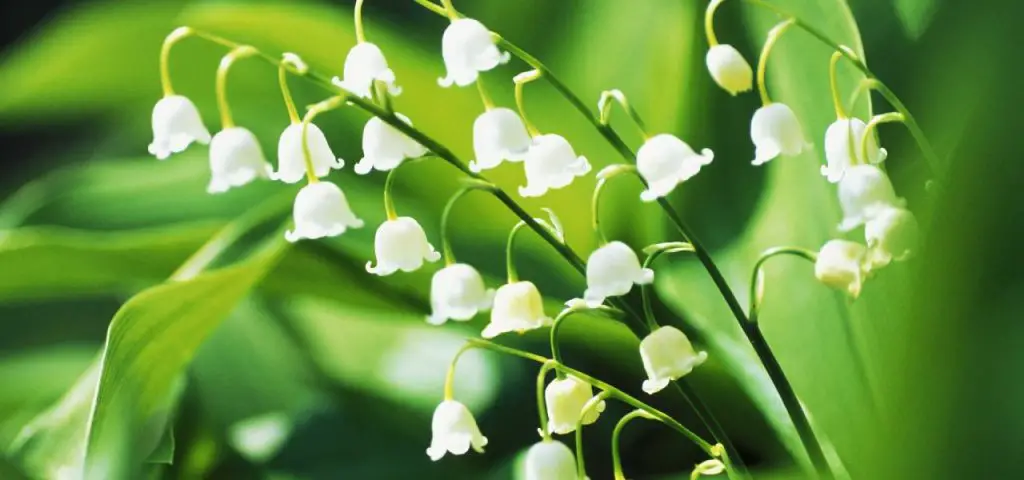
Reminiscent of true lilies, this spring bloomer is a fragrant, petite, white flower with a long stem. Don’t let their delicate appearance fool you. It is a hardy land cover that quickly grows and covers the garden. You can grow lily of the valley in almost all spots that have proper shades.
In fact, growing them under the trees is an ideal way to cover the ground. Moreover, the lily of the valley is a long-lived plant and doesn’t have serious problems with diseases or pests. But, planting the flower within the vicinity of other plants may choke out them.
That is why people like to grow lily of valley in the containers to avoid its unwanted spread. However, it needs proper watering to survive dry spells. If its flowering decreases, you can dig and divide them to reinforce the growth. Plus, the flower needs organically rich and clean soil with excellent growth.
| Best States to Grow Lily of Valley | Zones to Grow Lily of Valley |
|---|---|
| New Jersey | Lily of the valley can perform best in plant hardiness zone 3 through zone 8 |
| New York |
Best Flowers to Plant in Spring in Pots
With ravishing growth and new buds, there are dozens of flowers you can plant or grow in pots. Here are some of your options.
Violas and Daffodils

Don’t worry if you don’t have enough space to grow violas and daffodils in your garden. You can create a beautiful display using containers and pots. Plant spring bulbs in the fall and finish their small bedding in spring to make a unique pot display.
Saxifrage and Bergenia
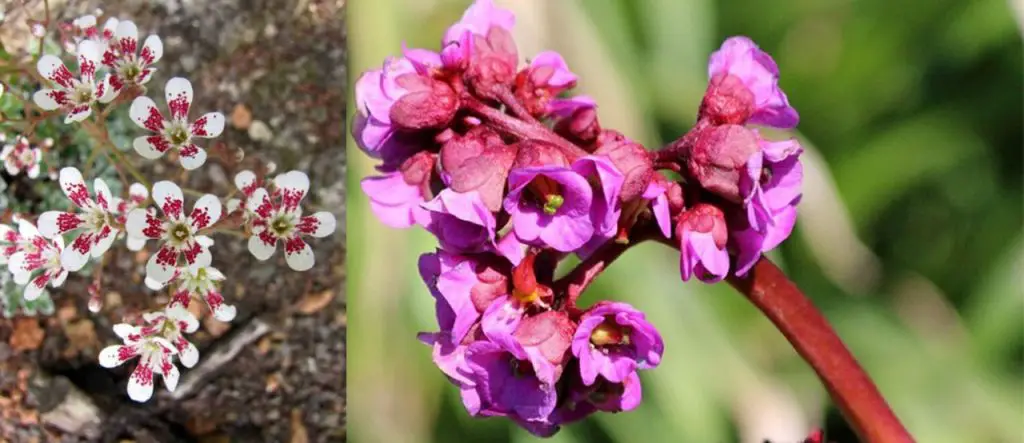
You can create a pot display using saxifrage and Bergenia. They are tough perennials and look great in shady corners. The pink flowers look fantastic if you combine them with the thrift to bring some colorful splash.
Coral Bells

This perennial plant grows well in shady spots year-round. These spring bulbs are unfussy and cold-tolerant and particularly work well with spring temperature. The flowers come in a variety of leaf shapes and colors.
Primrose
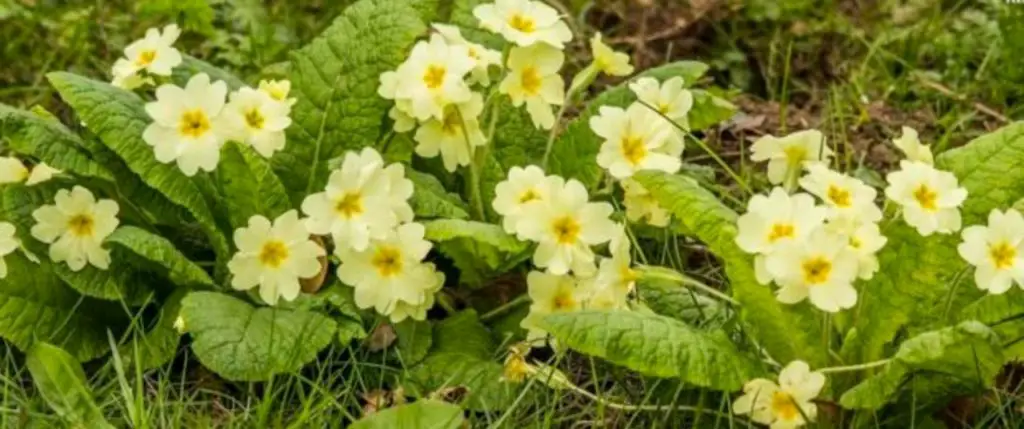
Primula” refers to the early-spring blooming, and that makes it a perfect title for Primrose. It is a beautiful semi-evergreen perennial with a variety of hues. With its short stature, the flower is an appropriate choice for the front of a pot.
Tulip

Tulip is another fantastic spring bloomer you can grow in a pot. With proper care and water supply, you can create a tulip pot that lasts a complete season.
Best Flowers to Plant in Spring That Look Gorgeous
Forsythia

Spring is undeniably the best time to grow and enjoy the gorgeous display of forsythia. They can grow in a row and cover the whole fence, making a fantastic look. If you know the USDA zone of your state You can also grow the flowers indoor to have gorgeous showy bright flowers. Whether you grow forsythia indoor or outdoor, they present a cheery spring display.
Azaleas

Azaleas are the prettiest blooming plants that can create a greeting look in your spring garden. The Georgian flowers make a spectacular show with their single and double-layered flowers. Azaleas come in lovely shades.
Some Tips for a Beautiful Spring Flower Garden
There is no need to obsessively check your garden for spring bloomers’ signs if you follow these smart tips.
· Keep Animals from Eating Your Flowers
If you have rabbits and deer munching off your flowers’ bulbs and buds, it can be frustrating. You must work with the right products such as organic fertilizers to keep them away from your gardens. Try Milorganite and Irish spring soap to repel the animals.
· Pick Early Bloomers
If your area’s climate is colder, you might be more anxious about seeing the spring signs in your landscape. Planting or growing early bloomers may make you feel that you’re in a rush. It is because the hardy bulbs start blossoming when you’re still bidding farewell to winter.
But petite flowers are much more affordable when planted in a group. Galanthus nivalis, for instance, is the dainty bell-shaped flower that blooms in January. Eranthis hyemalis is also a good choice for your snowy garden because of its bright yellow flowers.
· Pair Hardy and Bulbs Annuals
If you think planting a bag of sixty tulips this fall is enough to create a blooming garden in spring, you’re missing something. You can give your garden an aesthetic appearance by interplanting large bulbs such as hyacinth, daffodils, and tulips, with hardy annuals. The resulting look will be no less than a classic gardening magazine display. With the tools like lawn rollers, you can easily plant hardy and bulbs in spring.
· Include Flowering Shrubs
You must follow the design principles of the garden when creating a spring flowered-landscape. Start with trees, shrubs, and then grow other plants. Remember that shrubs give you garden dimension and texture and provide it with spring flowers for shady and sunny situations. Azaleas, for example, herald spring arrival in the southern garden.
· Grow Bare Root Perennials
If gardening is just your visual hobby, you might not be excited about the sights of gnarled root bags at your garden center. But there can be many benefits of purchasing and planting these bare-root flowers, especially when the gardening season begins.
That is s to say, planting flowers in their semi-dormant form makes them less susceptible to damage from spring frosts. Barefoot perennials are inexpensive compared to potted plants.
· Grow a Crocus Lawn
Planting flowers under the ground doesn’t require any special skills. However, you must mow the bulbs until the foliage matures to naturalize flowers. Therefore, choose early-blooming bulbs for your garden.
How to Deal With Spring Flowers After They Bloom
Once your spring flowers bloomed, there is still a lot of work to do. You might see a ratty-looking flora from daffodils and tulips. It is essential to trim the stems properly when bloomers are done blossoming. It will prevent plants from putting energy into seeds. Also, make sure to give your lawn a proper lime treatment ( if requires) to help it recover nutrients that can support your spring plantation.
Make sure you don’t cut the greenery and foliage. It might feel unsightly but leaving foliage is necessary to fortify the spring bulbs for the future blooming season.
Here is what you can do to hide the bulb foliage.
- Grow blooming bulbs near plants that have thick foliage to cover the fading bulb foliage. If you have daylilies, try to grow the bulbs against them. When the bulb foliage dies, the daylilies foliage grows fast and hides the bulb foliage. You can use the Hosta foliage to cover dying foliage.
- You can also lay foliage flat in the ground when working with dying foliage. The tip is great if there are no perennials to cover the dying foliage. You can also cover the soil with mulch.
- Make sure to remove any weed from your garden before planting flowers for spring. Your garden has to be in the best shape to support the growth of colorful spring flowers. You can use weed killers to keep your garden’s grass safe.
Conclusion: Best Flowers to Plant in Spring in Your State
All in all, spring is the golden season for gardeners. The trees are budding, and the ground begins to bloom. But you can only make the most of your spring garden when you know which plant to put in the landscape to enjoy gorgeous blooms all-round.
Thus, the guide explains some of the best flowers to plant in spring in different states and how you can maintain them after they bloom.

